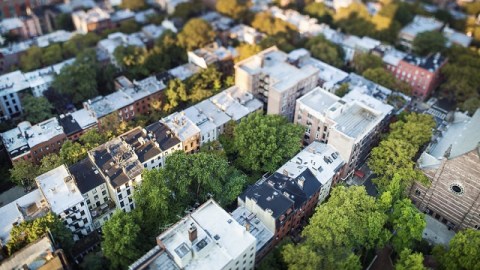More Proof That Trees Make Cities Healthier

What’s the Latest Development?
Recently published online in Environmental Pollution is a study by the US Forest Service and the Davey Institute that describes the health impacts of trees in 10 major cities. By measuring concentrations of fine particulate pollution — known as PM2.5, in which particles are less than 2.5 microns in size — researchers calculated that on average, urban trees save one life a year by removing the material from the air. In New York City, the combination of a large human population and trees’ moderately high PM2.5 removal rates led to an estimated eight lives saved each year. Atlanta had the highest overall removal due to relatively high numbers of trees and PM2.5 concentrations.
What’s the Big Idea?
Fine particulate air pollution contributes to several serious diseases and conditions, including pulmonary inflammation and atherosclerosis. Although the rates of PM2.5 removal were lower than those for larger particulate matter, the contributions to public health are much higher. Forest Service official Michael T. Rains says, “This research clearly illustrates that America’s urban forests are critical capital investments helping produce clear air and water; reduce energy costs; and, making cities more livable. Simply put, our urban forests improve people’s lives.”
Photo Credit: Shutterstock.com





